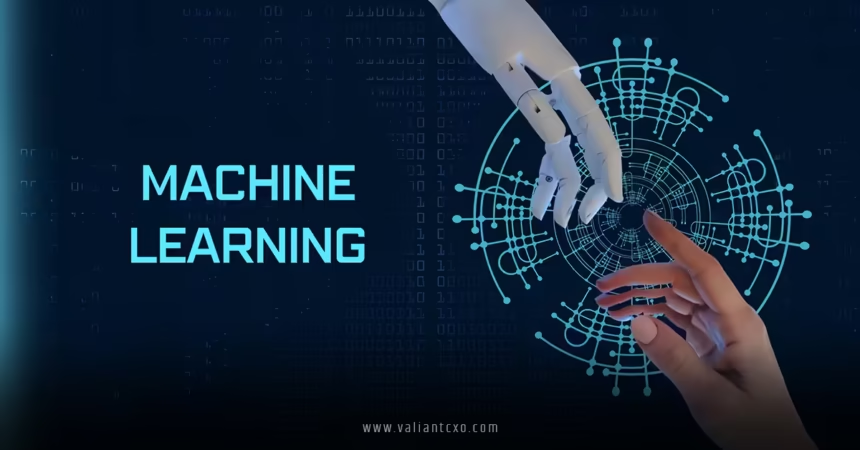Machine learning applications in the U.S. are reshaping the way we live, work, and innovate. From healthcare breakthroughs to smarter cities, machine learning (ML) is no longer a futuristic dream—it’s a reality driving progress across the nation. But what exactly are these applications, and how are they changing the American landscape? Let’s dive into the world of ML, exploring its impact with a conversational lens, like we’re chatting over coffee about the tech revolution unfolding around us.
What Are Machine Learning Applications in the U.S.?
At its core, machine learning is like teaching a computer to think like a super-smart detective. It sifts through mountains of data, spots patterns, and makes predictions without being explicitly told what to do. In the U.S., this tech is woven into industries, powering everything from your Netflix recommendations to life-saving medical diagnoses. Machine learning applications in the U.S. are diverse, touching healthcare, finance, transportation, and more. They’re built on algorithms that learn from data, adapt, and improve over time—kind of like a kid mastering a new skill, but way faster.
Why is the U.S. a hotspot for ML? It’s simple: the country boasts cutting-edge tech companies, world-class universities, and a culture that thrives on innovation. Giants like Google, Amazon, and Microsoft, alongside startups in Silicon Valley, are pushing the boundaries of what ML can do. Ready to see how? Let’s break it down.
Machine Learning Applications in the U.S. Healthcare System
Revolutionizing Diagnostics and Treatment
Imagine a doctor who never sleeps, analyzing patient data 24/7 to catch diseases before they spiral. That’s what machine learning applications in the U.S. are doing in healthcare. ML algorithms analyze medical images—like X-rays or MRIs—to detect conditions such as cancer or Alzheimer’s with jaw-dropping accuracy. For instance, Stanford University researchers developed an ML model that identifies skin cancer as accurately as top dermatologists. How cool is that?
Hospitals across the U.S. are using ML to predict patient outcomes. By crunching data from electronic health records, these systems flag high-risk patients, helping doctors intervene early. It’s like having a crystal ball, but instead of magic, it’s powered by data and math.
Personalized Medicine: A Game-Changer
Ever wonder why some medicines work for your friend but not for you? Machine learning applications in the U.S. are tackling this through personalized medicine. ML models analyze genetic data to tailor treatments to individual patients. Companies like Tempus in Chicago are using ML to match cancer patients with therapies based on their unique genetic profiles. It’s like getting a custom-made suit, but for your health.
Streamlining Operations
Hospitals are busy places, and ML is helping them run like well-oiled machines. From predicting patient admission rates to optimizing staff schedules, machine learning applications in the U.S. are saving time and money. For example, ML tools forecast emergency room traffic, ensuring enough staff are on hand during peak times. It’s like having a super-smart assistant who knows exactly what’s coming.
Machine Learning Applications in the U.S. Financial Sector
Fraud Detection: Stopping Crooks in Their Tracks
Ever get a text from your bank asking if you just tried to buy a yacht in Miami? That’s machine learning applications in the U.S. at work. Banks like JPMorgan Chase use ML to monitor transactions in real time, spotting suspicious activity faster than a hawk eyeing its prey. These systems learn from past fraud patterns, adapting to new tricks scammers try to pull.
Smarter Investing
Wall Street is no stranger to ML. Hedge funds and investment firms use machine learning applications in the U.S. to predict market trends. By analyzing historical data, news sentiment, and even social media buzz, ML models help traders make smarter bets. It’s like having a financial advisor who’s read every market report ever written—in seconds.
Customer Service That Feels Human
Chatbots powered by ML are transforming how banks interact with customers. These virtual assistants handle everything from balance inquiries to loan applications, all while sounding like your friendly neighborhood banker. Companies like Capital One use ML-driven chatbots to answer questions 24/7, making banking as easy as texting a friend.
Machine Learning Applications in the U.S. Transportation Industry
Autonomous Vehicles: The Road to the Future
Self-driving cars aren’t just sci-fi anymore—they’re cruising U.S. roads, thanks to machine learning applications in the U.S. Companies like Tesla and Waymo use ML to process data from cameras, sensors, and GPS, helping cars navigate traffic, avoid obstacles, and even parallel park better than you (no offense). These algorithms learn from millions of miles driven, getting smarter with every trip.
Traffic Optimization
Ever been stuck in a traffic jam, wishing someone could fix it? Machine learning applications in the U.S. are stepping up. Cities like Los Angeles use ML to analyze traffic patterns and optimize signal timings, reducing congestion. It’s like giving the city a brain that knows exactly when to turn lights green.
Logistics and Supply Chain
From Amazon’s warehouses to FedEx’s delivery trucks, ML is streamlining logistics. Machine learning applications in the U.S. predict demand, optimize delivery routes, and even manage inventory. This means your package arrives faster than you can say “free two-day shipping.” It’s efficiency on steroids.
Machine Learning Applications in the U.S. Retail and E-Commerce
Personalized Shopping Experiences
Ever notice how online stores seem to know exactly what you want? That’s machine learning applications in the U.S. working their magic. Retail giants like Amazon use ML to analyze your browsing history, purchases, and even wish lists to recommend products you’ll love. It’s like having a personal shopper who’s always one step ahead.
Inventory Management
Retailers hate empty shelves, and ML helps keep them stocked. By predicting demand based on trends, seasons, and even weather, machine learning applications in the U.S. ensure stores have what you need when you need it. Walmart, for instance, uses ML to optimize inventory across its thousands of stores.
Dynamic Pricing
Ever seen flight prices change while you’re browsing? That’s ML at work. Machine learning applications in the U.S. help retailers adjust prices in real time based on demand, competition, and customer behavior. It’s like a high-stakes game of chess, with algorithms making moves to maximize profits.
Machine Learning Applications in the U.S. Education Sector
Personalized Learning
Not everyone learns the same way, and ML is making education more inclusive. Machine learning applications in the U.S. power platforms like Khan Academy, which adapt lessons to a student’s pace and style. Struggling with algebra? ML can suggest practice problems tailored to your weak spots, like a tutor who knows you inside out.
Administrative Efficiency
Schools and universities are using ML to streamline operations. From predicting enrollment trends to automating grading, machine learning applications in the U.S. free up educators to focus on teaching. It’s like giving administrators a superpower to handle paperwork in a flash.
Early Intervention
ML is also helping identify students who need extra support. By analyzing grades, attendance, and even social factors, machine learning applications in the U.S. flag at-risk students early, allowing schools to step in before it’s too late. It’s like a safety net for the next generation.
Ethical Considerations of Machine Learning Applications in the U.S.
Bias and Fairness
ML isn’t perfect—it’s only as good as the data it’s fed. If that data is biased, the results can be too. Machine learning applications in the U.S. are under scrutiny to ensure they don’t perpetuate inequalities. For example, facial recognition systems have faced criticism for misidentifying people of certain ethnicities. The U.S. is tackling this with regulations and ethical guidelines to make ML fairer.
Privacy Concerns
With great power comes great responsibility. Machine learning applications in the U.S. rely on massive datasets, raising questions about privacy. How do we balance innovation with protecting personal info? Companies are investing in secure ML models, like federated learning, to keep data safe while still learning from it.
Job Displacement
Will ML take our jobs? It’s a valid worry. While machine learning applications in the U.S. automate tasks, they also create new roles in data science and AI development. The key is reskilling workers to thrive in an ML-driven world, like teaching an old dog new tricks.
The Future of Machine Learning Applications in the U.S.
What’s next for machine learning applications in the U.S.? The possibilities are endless. From smarter cities to climate change solutions, ML is set to tackle big challenges. Imagine algorithms predicting natural disasters with pinpoint accuracy or optimizing renewable energy grids. The U.S. is investing heavily in ML research, with institutions like MIT and Stanford leading the charge.
The government is also stepping in, with initiatives like the National Artificial Intelligence Initiative boosting ML development. As 5G and quantum computing gain traction, machine learning applications in the U.S. will get faster and more powerful, like a sports car getting a turbo upgrade.
Conclusion
Machine learning applications in the U.S. are more than just tech buzzwords—they’re transforming how we live, work, and dream. From diagnosing diseases to unclogging traffic, ML is making life better, smarter, and more efficient. The U.S. is at the forefront of this revolution, blending innovation with real-world impact. So, what’s stopping you from exploring this exciting world? Dive in, learn more, and maybe even contribute to the next big ML breakthrough. The future is here, and it’s powered by machine learning.
FAQs
1. What are some common machine learning applications in the U.S.?
Machine learning applications in the U.S. span healthcare (diagnostics), finance (fraud detection), retail (personalized recommendations), and transportation (self-driving cars). They use data to make predictions and improve efficiency across industries.
2. How is machine learning used in U.S. healthcare?
In the U.S., ML analyzes medical images, predicts patient outcomes, and personalizes treatments. Machine learning applications in the U.S. healthcare system help doctors catch diseases early and optimize hospital operations.
3. Are there ethical concerns with machine learning applications in the U.S.?
Yes, issues like bias in algorithms, privacy risks, and job displacement are concerns. Efforts are underway to ensure machine learning applications in the U.S. are fair and secure.
4. How do machine learning applications in the U.S. impact jobs?
While ML automates some tasks, it also creates new roles in data science and AI. Reskilling programs are key to helping workers adapt to machine learning applications in the U.S.
5. What’s the future of machine learning applications in the U.S.?
The future includes smarter cities, climate solutions, and faster ML thanks to 5G and quantum computing. Machine learning applications in the U.S. will continue to grow with research and government support.
For More Updates !! : valiantcxo.com


